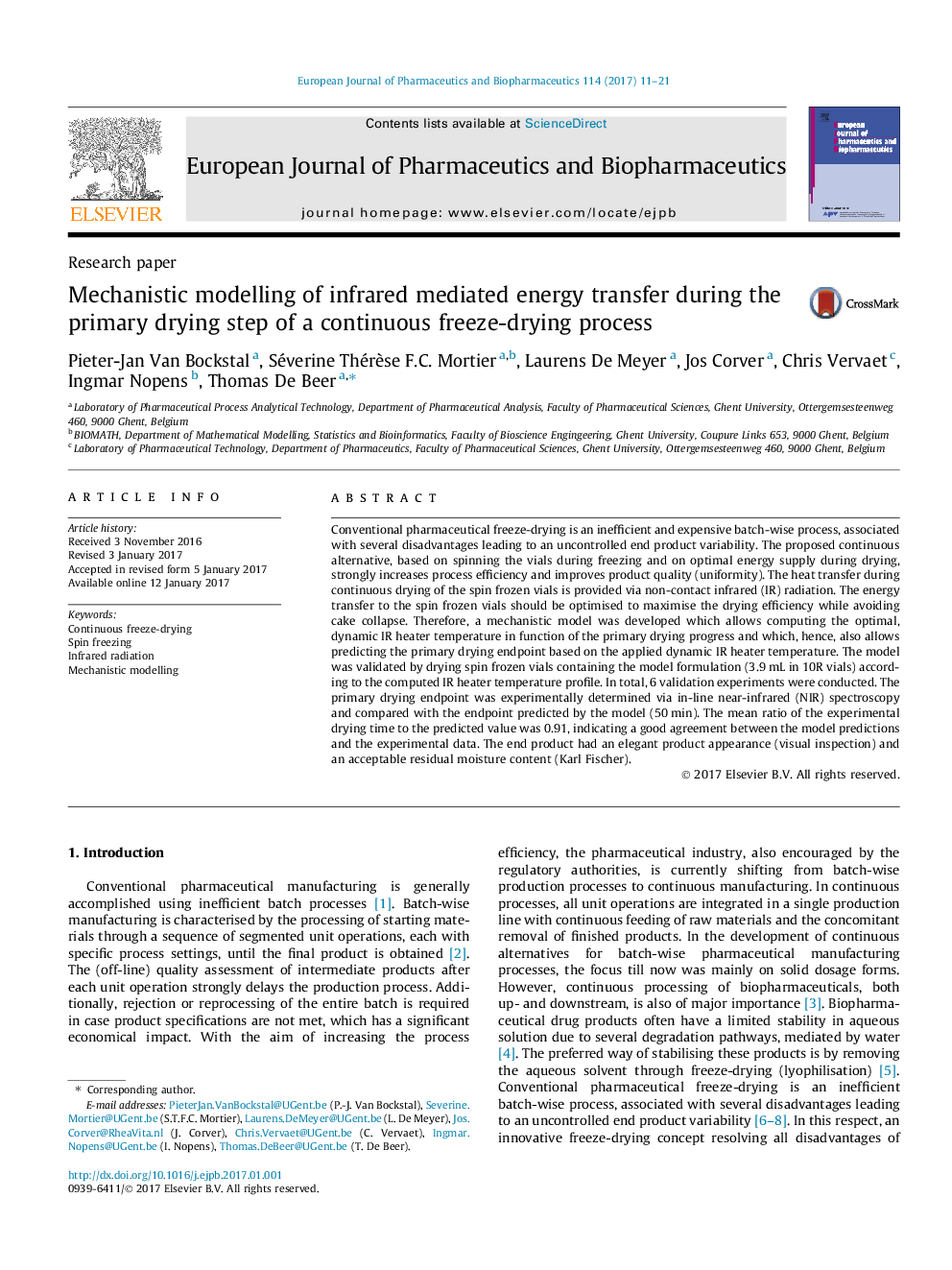| Article ID | Journal | Published Year | Pages | File Type |
|---|---|---|---|---|
| 5521438 | European Journal of Pharmaceutics and Biopharmaceutics | 2017 | 11 Pages |
Conventional pharmaceutical freeze-drying is an inefficient and expensive batch-wise process, associated with several disadvantages leading to an uncontrolled end product variability. The proposed continuous alternative, based on spinning the vials during freezing and on optimal energy supply during drying, strongly increases process efficiency and improves product quality (uniformity). The heat transfer during continuous drying of the spin frozen vials is provided via non-contact infrared (IR) radiation. The energy transfer to the spin frozen vials should be optimised to maximise the drying efficiency while avoiding cake collapse. Therefore, a mechanistic model was developed which allows computing the optimal, dynamic IR heater temperature in function of the primary drying progress and which, hence, also allows predicting the primary drying endpoint based on the applied dynamic IR heater temperature. The model was validated by drying spin frozen vials containing the model formulation (3.9Â mL in 10R vials) according to the computed IR heater temperature profile. In total, 6 validation experiments were conducted. The primary drying endpoint was experimentally determined via in-line near-infrared (NIR) spectroscopy and compared with the endpoint predicted by the model (50Â min). The mean ratio of the experimental drying time to the predicted value was 0.91, indicating a good agreement between the model predictions and the experimental data. The end product had an elegant product appearance (visual inspection) and an acceptable residual moisture content (Karl Fischer).
Graphical abstractDownload high-res image (81KB)Download full-size image
